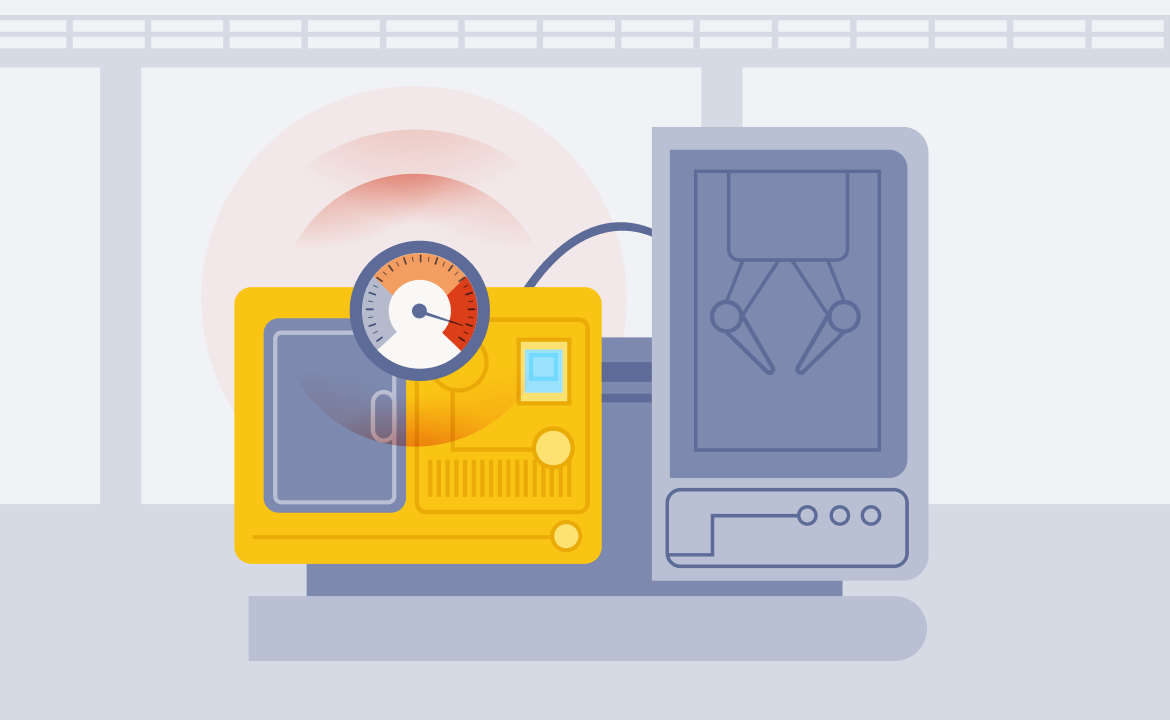
Modernizing a data warehouse with real-time streaming data
Get familiar with the basics of real-time data streaming, how they play together, and how they differ.

Real-time streaming data allows you to process and analyze the data as soon as it is generated. In practical terms, this is changing the way organizations perceive and use data warehouses.
Traditional data warehousing practices often involve lengthy batch processing and data loading, resulting in delays that can limit the timely availability of actionable insights. Real-time data streaming obliterates these time lags, enabling businesses to react instantly to evolving scenarios.
This post explores what real-time streaming data is and why it's important. It also outlines general guidelines for modernizing a data warehouse with real-time streaming data.
What is real-time streaming?
Real-time streaming data involves the continuous transmission and processing of raw data, but more importantly, it allows processing and analyzing such data immediately when it is generated. As mentioned, this is radically different from traditional data pipelines, where data is stored in a data warehouse and then processed in batches.
Providing real-time analytics to decision-makers is possible through state-of-the-art streaming data platforms, which can quickly handle large volumes of data. These systems read, analyze, and process data on the fly, providing insights within milliseconds of the data being produced.
As you will learn shortly, there are countless event-driven apps that can leverage this technology.
Why real-time streaming matters
There are countless data sources today, from IoT devices to enterprise resource management systems, server logs, API endpoints, and more. Trying to process all that data using traditional methods is out of the question. That's why stream data processing is essential.
As we explained, the modern streaming data approach opens the door to event-driven applications that can adapt in real time to changing situations. This allows applications to capture insights and identify opportunities and risks as they emerge.
This technology is particularly useful in scenarios where time-sensitive actions are crucial. For instance, financial institutions use real-time streaming to monitor transactions for fraudulent activity. This real-time data processing helps identify any suspicious activity or discrepancies in the transactions, thus ensuring secure and trustworthy operations.
Another use case where real-time data plays an important role is in stock market trading, as it provides up-to-the-minute updates on stock prices, allowing traders to make informed decisions almost instantly. This real-time analysis is critical in an environment as volatile and fast-paced as the stock market, where delayed information can lead to missed opportunities or financial losses.
In essence, real-time streaming is about speed and immediacy. Breaking down time and storage barriers enables businesses to be more proactive and responsive, unlocking new opportunities for growth and innovation.
Benefits of using real-time data within a data warehouse
As you can see, one of the most significant benefits of integrating streaming data into a data warehouse is real-time data processing. This is crucial in scenarios where delays in data analysis could lead to missed opportunities or increased risks, such as detecting fraud in banking transactions or responding to customer queries on social media.
That being said, there are additional benefits that are worth mentioning:
- Timely data Ingestion and acquisition: The prime advantage of using real-time data in data warehouses lies in its capacity for immediate data ingestion. This means that data can be streamed directly to the warehouse from a multitude of sources in real-time. This not only expedites data acquisition but also allows for instantaneous data transformation. As a result, the need for a separate data cleaning phase is eliminated, saving crucial time. This efficient mechanism ensures that data is always up-to-date, fostering more accurate decision-making and predictive analysis.
- Improved scalability: Traditional data warehouses often struggle to manage large volumes of data, which can lead to slower processing times and potential data loss. With real-time streaming data, businesses can easily scale their data processing capabilities to handle increasing data volumes, thereby ensuring consistent performance and reliability.
- Increased flexibility: This is also a key advantage of using real-time data. Unlike traditional data warehouses that require structured data, real-time data can be processed regardless of its format. This means businesses can capture and analyze a wider range of data, including unstructured data such as social media posts or customer reviews, which can provide valuable insights into customer behavior and market trends.
- Enhanced security: Real-time data processing allows for continuous monitoring of data flow, which can help identify and address potential security threats before they cause damage. This is particularly important in today's digital age, where data breaches can have severe financial and reputational consequences.
In summary, using real-time data within a data warehouse offers numerous benefits, including real-time data processing, improved scalability, increased flexibility, and enhanced security. By leveraging these benefits, businesses can gain a competitive edge, drive innovation, and foster growth. However, it's important to note that integrating streaming data into a warehouse comes at a price.
Challenges of integrating streaming data into a warehouse
Though there are very substantial benefits to integrating streaming data into your warehouse, there are some challenges as well. The following are some challenges involved in integrating streaming data into a data warehouse.
High costs
The process of integrating real-time data into an existing data warehouse can be costly. This includes the cost of acquiring the necessary hardware and software, as well as the cost of maintaining the system once it is operational. The costs can also escalate when dealing with large volumes of data.
Technical knowledge gap
The integration of streaming data into a data warehouse requires specialized skills and knowledge. This includes understanding complex data processing algorithms, data management practices, and various real-time data processing tools. Not all organizations have the in-house expertise to handle this, leading to a need for training or hiring specialists.
Organizational changes
The shift from traditional data processing to real-time data streaming can bring about significant organizational changes. This includes changes in the way data is handled, stored, and processed. Additionally, it requires a culture shift towards data-driven decision-making, which may not be easily accepted in organizations that are used to traditional ways of working.
Data quality and consistency
Ensuring the quality and consistency of data can be a significant challenge when dealing with real-time data streams. This is because data is processed as soon as it is generated, leaving little time for data cleaning and standardization.
Data security and privacy
As the volume of data being processed increases, so does the risk of data breaches and privacy violations. It's crucial to ensure that robust security measures are in place to protect sensitive data from unauthorized access and misuse.
System integration
Integrating real-time data processing with existing IT infrastructure can be a complex task. There could be compatibility issues that need to be resolved to ensure seamless data flow across different systems.
Overall, the transition from the traditional data approach to the modern data stream paradigm is similar to DevOps modernization, where a paradigm shift in the organization's operations and culture is required. It demands a change in mindset, increased collaboration, continuous learning, and a willingness to embrace new technologies.
General guidelines for modernizing a data warehouse with real-time data

Simplified data architecture diagram
Modernizing a data warehouse with real-time data involves a process that incorporates data storage, processing, analytics, and other steps as necessary. Below are some tips and steps that can help your organization transition to a full-blown streaming data system.
Data storage
When modernizing a data warehouse with real-time data, the first critical step is to upgrade your data storage. Traditional data warehouses may not always have the capacity to manage the massive influx and rapid speed of real-time data. As such, transitioning to a cloud-based data storage solution should be considered.
Cloud-based data storage offers a range of benefits, including scalability, flexibility, and accessibility.
Data processing
Traditional extract, transform, load (ETL) processes have been the backbone of data warehousing for decades. Nevertheless, ETL methodology was primarily designed to process static data in batches, meaning it cannot handle real-time data.
In this sense, the best practice when modernizing the data warehouse to process streaming real-time data is to make a gradual transition. This gradual shift can help mitigate potential risks and roadblocks during the process. Begin by identifying the data that your organization typically needs to act on quickly. Then your team can start converting these specific datasets from ETL to Streaming ETL, a modern alternative to traditional ETL, focusing on real-time data processing. That way, instead of batch processing data, your organization will begin to harness the power of streaming ETL and process data immediately as it becomes available.
Moreover, this strategy is in line with the next step (data integration), where historical and real-time data coexist.
Data integration
Modernizing a data warehouse with real-time streaming data does not mean downplaying historical data. On the contrary, from a holistic view, it's desirable to integrate your real-time data with historical data since this provides a more complete picture of business operations. For instance, real-time streaming data can be used to monitor and analyze opportunities that are time-sensitive, while historical data is invaluable for generating insights into macro-level trends and patterns useful in preparing for future opportunities.
All in all, this requires a data integration tool that can handle both batch and stream processing.
Analytics
Real-time analytics is crucial for delivering actionable insights from event data, where an event refers to any significant occurrence or change in the state of data, which is recorded and processed immediately in real-time streaming. For this reason, it makes sense to upgrade your current analytics engine to handle real-time data.
Although explaining in detail how to implement an analytics system is beyond the scope of this guide, if you use the right tools, you can enjoy the benefits of real-time analytics without much hassle.
In addition to the steps listed above, it's good practice to consider implementing additional concepts such as data governance to ensure data quality, lineage, privacy, and security. Likewise, you should not overlook proper training to ensure that your team can handle this new setup. This includes understanding the new tools and processes as well as how to interpret real-time analytics.
Remember, this is a simplified view of a potentially complex architecture. You may need additional components or steps depending on your organization's specific needs.
Conclusion
Implementing streaming data may seem overwhelming, but your organization can accelerate the adoption of this disruptive technology thanks to Redpanda.
Redpanda is a highly efficient streaming data platform designed to simplify the process of creating real-time streaming infrastructure for companies. Unlike traditional platforms, Redpanda is deployed as a self-contained, single binary, eliminating the need for additional components like JVM, Apache ZooKeeper™ and Schema Registry, which often complicate the deployment and management process.
To get started with Redpanda for simpler real-time streaming data, check the documentation and browse the Redpanda blog for tutorials. To try it for yourself, take Redpanda for a test drive! If you have any questions or want to chat with the team, join the Redpanda Community on Slack.
Related articles
VIEW ALL POSTSLet's keep in touch
Subscribe and never miss another blog post, announcement, or community event. We hate spam and will never sell your contact information.
















